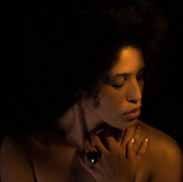Jazz Flashcards, test questions and answers
Discover flashcards, test exam answers, and assignments to help you learn more about Jazz and other subjects. Don’t miss the chance to use them for more effective college education. Use our database of questions and answers on Jazz and get quick solutions for your test.
What is Jazz?
Jazz is an American musical art form that has heavily influenced popular culture for over a century. Jazz emerged in the early 20th century out of the African-American experience and has since gone on to become a global phenomenon, influencing countless other genres along the way. Jazz has been described as the sound of surprise due to its improvisational nature and ability to blend multiple musical styles together. It also stands out from other forms of music through its use of syncopation, unusual rhythms, and complex harmonies. The roots of jazz are found in traditional African music, which was adapted by African slaves brought to America during the slave trade era. Traditional African music is characterized by its strong rhythmical patterns and call-and-response vocal arrangement. These elements were combined with European instruments such as trumpets, clarinets, saxophones and trombones to create what we now know as jazz. The earliest examples were ragtime songs combining elements from both traditions. Ragtime was followed by blues music which further incorporated elements such as extended chords and solo improvisations that would later become staples of jazz music. In the 1920s jazz began to gain popularity in New Orleans where musicians like Louis Armstrong pioneered the style known as Dixieland or Hot Jazz which featured fast tempos with heavy emphasis on brass instruments like trumpets and trombones played in unison or call-and-response with each other accompanied by drums, piano and banjo or guitar playing rhythmic patterns known as riffs or licks. This style was influential in spreading jazz around the world during this period when radio broadcasts made it possible for people everywhere to experience it for themselves regardless of their location. In the 1930s a new style known as swing emerged featuring bigger bands made up of multiple horns playing melodic lines together creating tight harmonies while a drummer provided steady rhythm often played at faster tempos than earlier styles had favored resulting in more energetic performances that audiences enjoyed dancing along too creating an entirely new popular culture phenomenon that spread throughout America quickly becoming extremely popular especially among young people who embraced this new exciting sound. As swing gave way to bebop during World War II musicians such as Charlie Parker further pushed boundaries experimenting with even more complex chord progressions alongside his trademark fast runs on saxophone while others explored more radical directions incorporating influences from Latin America India Africa etc leading eventually into modern jazz today where anything goes.
















